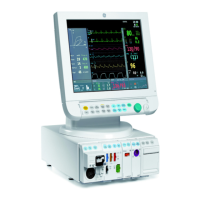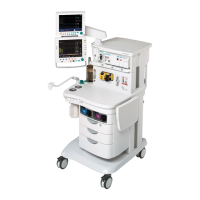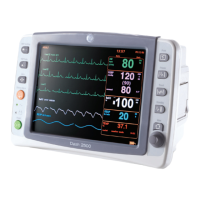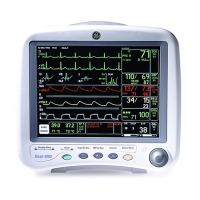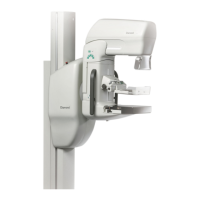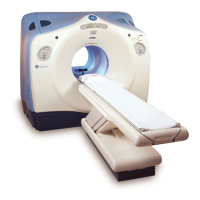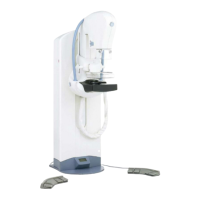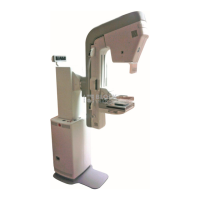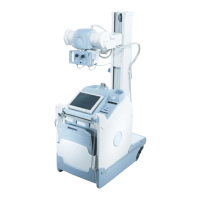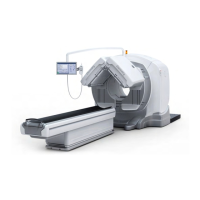Appendix B, ElectroMagnetic Compatibility
B-5(6)
Document no. M1144951-004
Table 4 Recommended separation distances between portable and mobile RF
communications equipment and the S/5™ CAM/ CCCM
(1
For impedance RESP measurement. For invasive pressure measurement in M-series
modules except M-PRE(S)TN. The invasive pressure measurement compliance level is
dependent on the transducer used, and only the lower level is guaranteed for all
transducers.
(2
For BIS measurement in E-BIS/M-BIS, RESP measurement in M-(P)RE(S)TN and invasive
pressure measurement in M-COPSv/E-COPSv and M-COP/E-COP modules. The invasive
pressure measurement compliance level is dependent on the transducer used, and only
the lower level is guaranteed for all transducers.
Recommended separation distances between portable and mobile RF communications
equipment and the S/5™ CAM/ CCCM.
The S/5™ CAM/ CCCM is intended for use in an electromagnetic environment in which radiated RF
disturbances are controlled. The customer or the user of the S/5™ CAM/ CCCM can help prevent
electromagnetic interference by maintaining a minimum distance between portable and mobile RF
communications equipment (transmitters) and the S/5™ CAM/ CCCM as recommended below, according to
the maximum output power of the communications equipment.
Rated maximum
output power of
transmitter
W
Separation distance according to frequency of transmitter
m
150 kHz to 80 MHz
(1
80 MHz to 800 MHz
(2
80 MHz to 800 MHz
(2
0.01 0.12
0.35
(1
0.12
0.35
(2
0.23
0.70
(2
0.1 0.38
1.1
(1
0.38
1.1
(2
0.73
2.2
(2
11.2
3.5
(1
1.2
3.5
(2
2.3
7.0
(2
10 3.8
11
(1
3.8
11
(2
7.3
22
(2
100 12
35
(1
12
35
(2
23
70
(2
For transmitters rated at a maximum output power not listed above, the recommended separation distance d
in meters (m) can be estimated using the equation applicable to the frequency of the transmitter, where P is
the maximum output power rating of the transmitter in watts (W) according to the transmitter manufacturer.
NOTE 1 At 80 MHz and 800 MHz, the separation distance for the higher frequency range applies.
NOTE 2 These guidelines may not apply in all situations. Electromagnetic propagation is affected by
absorption and reflection from structures, objects and people.
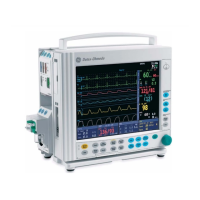
